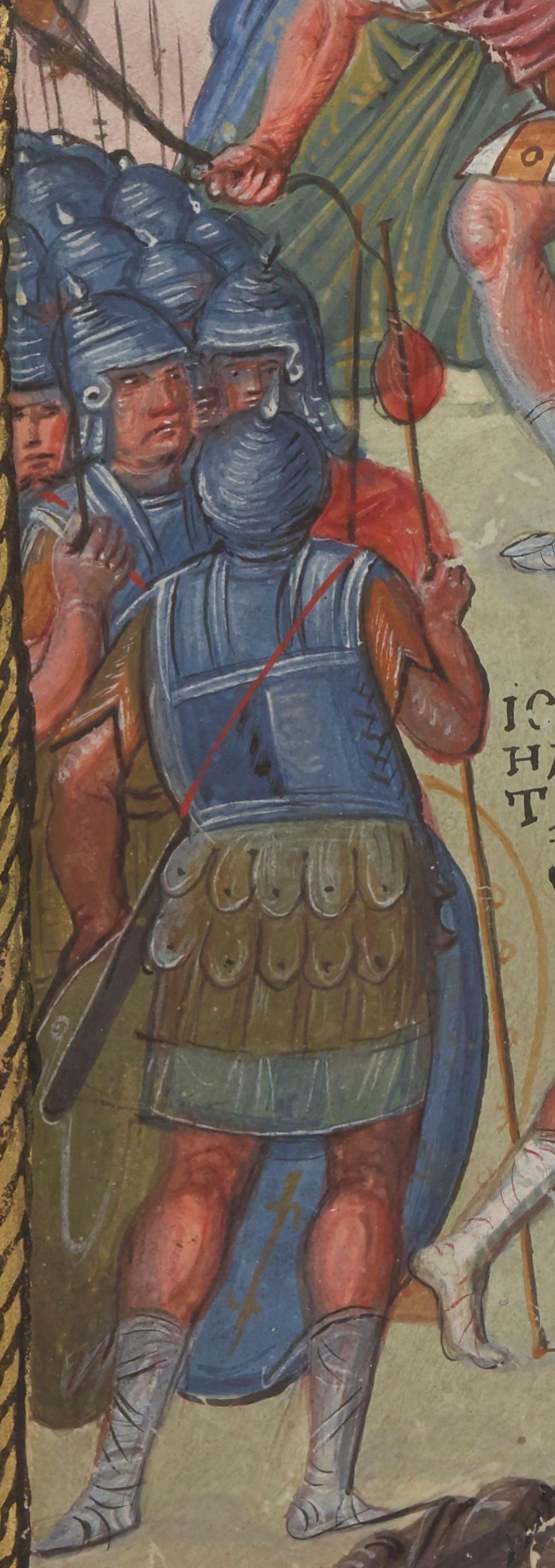
Try Amazon Audible Plus
Detail of the Israelite soldiers (portrayed as Byzantines) in the
Paris Psalter, 10th century
folio 4v. David and Goliath



Paris psalter (BnF MS Grec 139), folio 4v
The Paris Psalter (Paris, Bibliothèque Nationale, MS. gr. 139), designated by siglum 1133 (Rahlfs), is a Byzantine illuminated manuscript containing 449 folios and 14 full-page miniatures "in a grand, almost classical style", as the Encyclopædia Britannica put it. Together with Basil I's Homilies of St Gregory Nazianzus, the Paris Psalter is considered a key monument of the so-called Macedonian Renaissance in Byzantine art during the 10th century.
This and other miniatures are so Hellenistic in execution and so unlike the received notion of what medieval art in general and Byzantine art in particular should look like, that most 19th-century authorities dated the manuscript to the time of Justinian. The Byzantists Hugo Buchthal and Kurt Weitzmann, however, conclusively demonstrated that the book was created in the 10th century.
Image Source: Bibliothèque nationale de France, MS. gr. 139
Referenced as figure 211 in The military technology of classical Islam by D Nicolle
211. Manuscript, David and Goliath, 10th century AD, Byzantine, Bib. Nat. Ms. Gr. 139, f.4v, Paris (Hea).